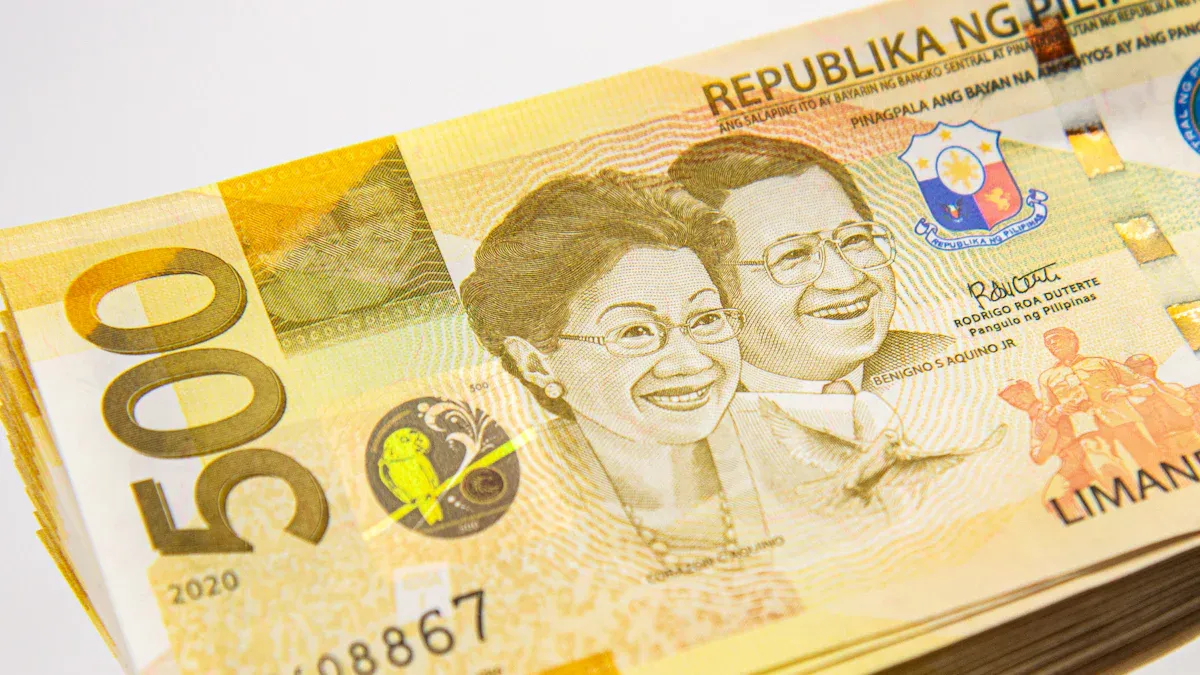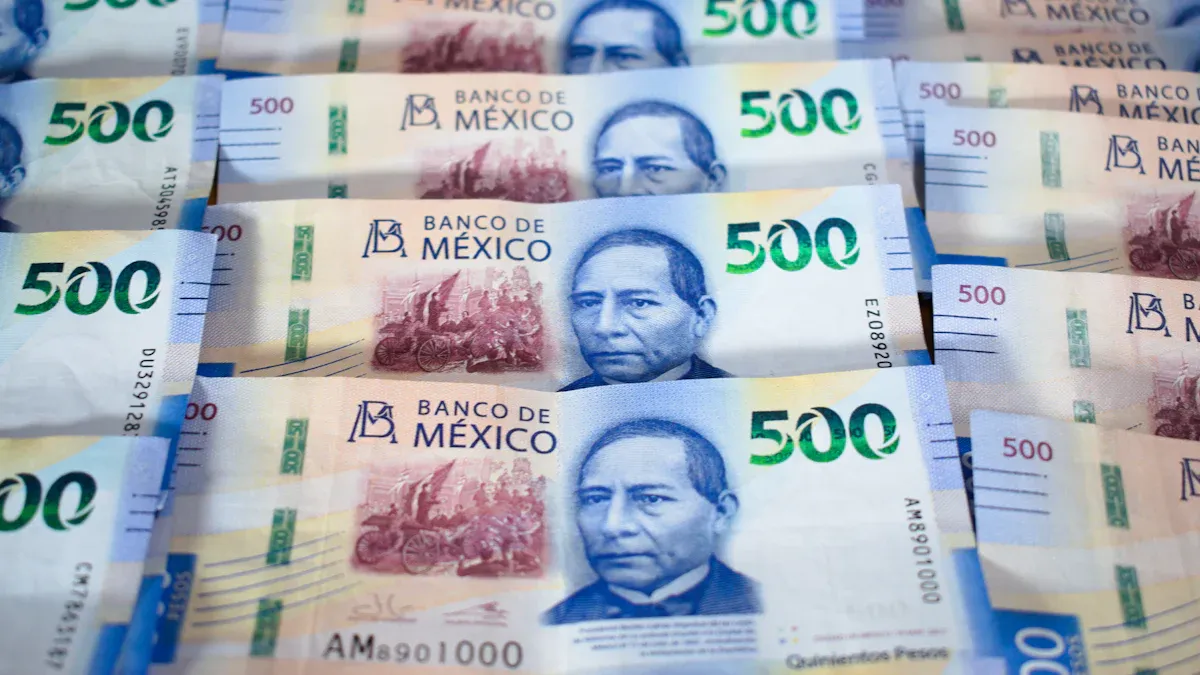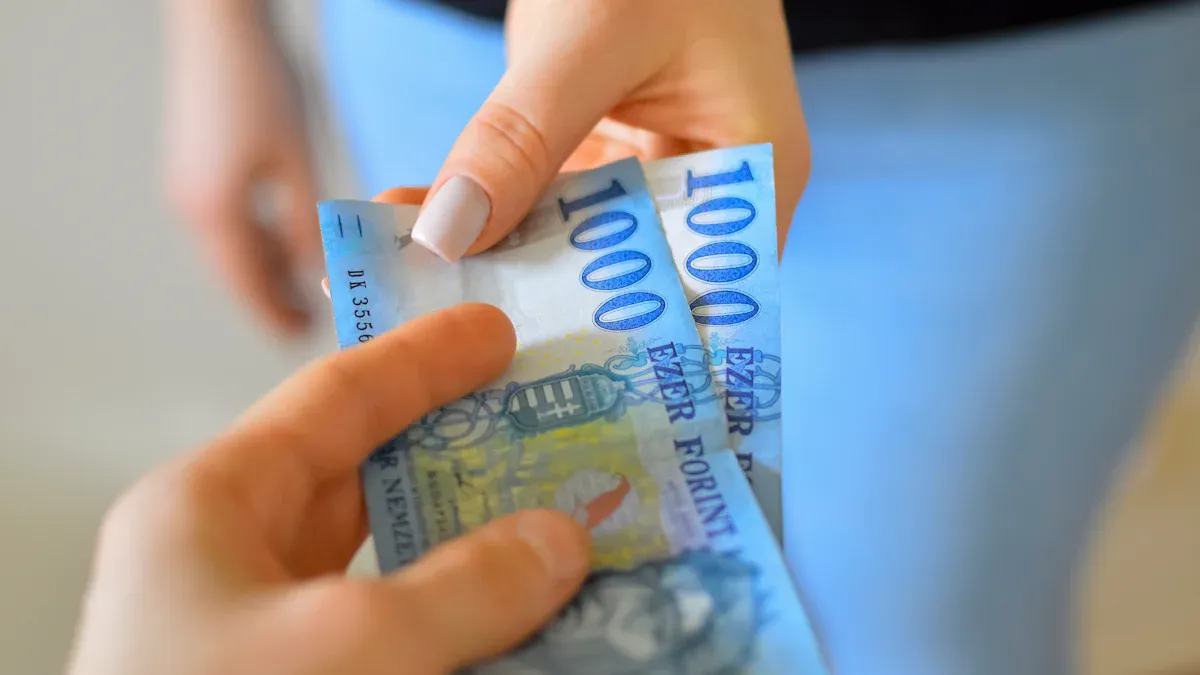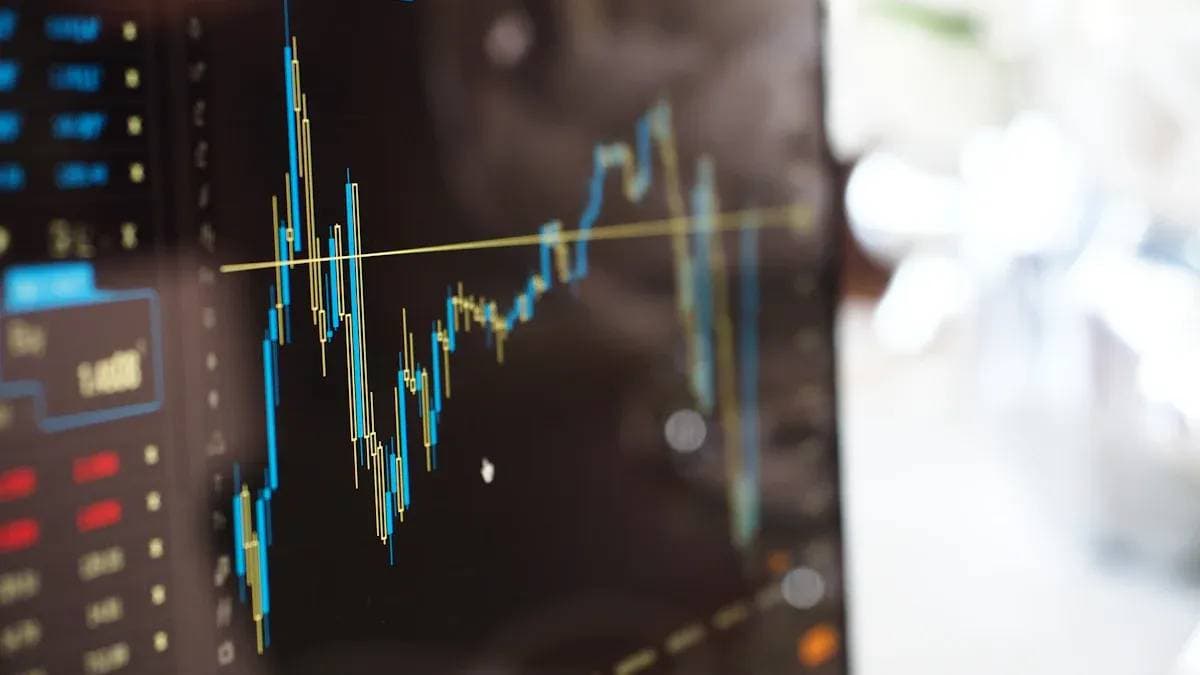- EasyCard
- Trade
- Help
- Announcement
- Academy
- SWIFT Code
- Iban Number
- Referral
- Customer Service
- Blog
- Creator
Understanding the Philippine Peso Symbol: Cultural, Economic Significance, and Key Aspects of Remittance Transactions

Image Source: unsplash
You encounter the Philippine currency symbol (₱) daily when shopping in the Philippines, using a bank card, or making cross-border remittances. This symbol represents the Philippine peso, serving as a crucial marker for identifying amounts and managing financial transactions. You see it in supermarkets, banks, and online payment platforms, helping you clearly distinguish between different currencies and avoid confusion.
Key Points
- The Philippine currency symbol ₱ represents the peso, commonly used in shopping and remittances to identify amounts.
- In international remittances, always use the correct currency code PHP to ensure funds arrive smoothly.
- Philippine banknotes feature rich cultural elements, showcasing the nation’s history and spirit.
- Remittances are vital to the Philippine economy, contributing 8.94% to GDP in 2023.
- Using digital tools like GCash and Maya for real-time exchange rate checks helps you make informed remittance decisions.
Introduction to the Philippine Currency Symbol

Image Source: pexels
Currency Code and Abbreviations
You frequently encounter the Philippine currency symbol in daily life. The official currency code for the Philippine peso is PHP, as designated by the International Organization for Standardization (ISO 4217). You see this code in banks, remittance forms, electronic payment platforms, and international financial systems. Besides PHP, the Philippine peso has other common abbreviations like PhP, Php, P$, and P. These abbreviations appear on bills, receipts, and price tags.
| Currency Name | Code | Symbol |
|---|---|---|
| Philippine Peso | PHP | ₱ |
When filling out cross-border remittance forms, you typically need to accurately enter PHP or ₱ to ensure funds are delivered correctly. Many international payment systems and licensed Hong Kong banks also use PHP to denote the Philippine peso, helping you distinguish currencies from different countries and avoid amount confusion.
Tip: When making international remittances, always double-check the currency code and symbol to ensure accuracy, reducing delays and errors.
Everyday Use Cases
The Philippine currency symbol is ubiquitous in your daily life. You see the ₱ symbol when riding a jeepney, buying fresh fruit, paying tuition, or shopping at supermarkets. It is not just a marker but a key tool for identifying prices and amounts.
- The Philippine peso (₱) is accepted nationwide for various transactions, such as paying jeepney fares or buying fresh tropical fruit at local markets.
- The peso plays a significant role in many households, especially those receiving remittances from overseas Filipino workers. These remittances are often converted to pesos for daily expenses, education, and savings.
- The peso is crucial for the Philippines’ regional and global trade agreements. Its value against other currencies impacts import and export activities, affecting the overall economy.
In cross-border remittances, the Philippine currency symbol is equally important. The Bangko Sentral ng Pilipinas continuously optimizes remittance processes, promoting electronic transfers and financial technology innovations. For example, fintech companies like Wise integrate with Philippine payment systems, allowing you to efficiently complete large transfers. When using these services, you typically see PHP or ₱, helping you clearly understand remittance amounts and exchange rates, avoiding hidden fees.
| Evidence Type | Description |
|---|---|
| Regulatory Revisions | New rules from the Bangko Sentral ng Pilipinas streamline cross-border remittance processes, promoting electronic transfers and enhancing financial inclusion for Filipinos. |
| Financial Technology Innovation | Wise’s full integration with Philippine payment systems makes remittances more efficient, allowing users to easily transfer large sums. |
In practice, correctly understanding and using the Philippine currency symbol helps you smoothly complete various financial transactions, whether for local consumption or international remittances.
The Philippine Currency Symbol and Culture
Banknote Design
When observing Philippine banknotes, you notice they are rich in cultural elements. Banknotes are not just payment tools but carriers of national history and culture. You can see the following aspects:
- Banknotes often feature portraits of national heroes, representing the Philippines’ history and national spirit.
- Designs depict significant historical events, showcasing the nation’s identity and core values.
- Patterns of native plants and animals are prominent, emphasizing the Philippines’ biodiversity and natural heritage.
- The Philippine eagle symbolizes strength and freedom, reflecting the resilience of the Filipino people.
- The sampaguita, the national flower, represents purity, humility, and resilience.
When using the Philippine currency symbol, you are not only engaging in financial transactions but also experiencing the nation’s cultural heritage. Every detail on the banknotes tells the story of the Philippines.
Historical Figures and Landmarks
When examining Philippine banknotes and coins closely, you notice many historical figures and landmarks. These elements enhance the artistic value of the currency and strengthen national identity. The table below lists some denominations, their associated figures or landmarks, and their significance:
| Denomination | Historical Figure/Landmark | Significance |
|---|---|---|
| ₱20 | Declaration of Independence | Represents the struggle for Philippine independence |
| ₱50 | Blood Compact of Miguel López de Legazpi and Sikatuna | Reflects strong ties to indigenous roots |
| ₱100 | Manuel A. Roxas | Known as the “Father of Philippine Independence” |
| ₱200 | Diosdado Macapagal | Declared June 12 as Independence Day |
| ₱500 | Corazon Aquino | Commemorates her role in restoring democracy |
| ₱1000 | José Abad Santos | WWII hero who sacrificed for the nation |
| N/A | Mayon Volcano | Showcases national natural beauty and cultural heritage |
| N/A | Banaue Rice Terraces | Promotes tourism and national pride |
| N/A | Taal Lake | Reflects the Philippines’ natural beauty and cultural heritage |
When using the Philippine currency symbol in daily life, you are participating in the preservation of national history and culture. Each banknote and coin carries the nation’s memories and pride. The Philippine currency symbol is not only an economic tool but also a symbol of national heritage and identity.
Economic Role
Exchange Rates and Inflation
When focusing on the Philippine currency symbol, you realize it is closely tied to the economic system. Exchange rate fluctuations directly affect your purchasing power in international transactions. The Philippine peso’s exchange rate against the US dollar has seen multiple changes over the past decade. The table below shows recent exchange rate changes:
| Date | Exchange Rate (PHP/USD) | Change (%) |
|---|---|---|
| 2025-09-15 | 0.0174322 | N/A |
| 2025-09-17 | 0.0177431 | -0.760% |
| Current | 0.0175225 | -0.306% |
| Date | Exchange Rate (USD/PHP) | Change (%) |
|---|---|---|
| 2025-09-15 | 57.365 | N/A |
| 2025-09-17 | 56.36 | 0.766% |
| Current | 57.0695 | 0.307% |
In November 2024, you could see the peso hit a historic high of 60.66 against the US dollar. Exchange rate changes affect the actual amount you pay in cross-border remittances and international shopping. Inflation also shapes your perception of the Philippine currency symbol. The table below shows peso depreciation and inflation rates over the past three years:
| Year | Peso Depreciation (%) | Inflation Rate (%) |
|---|---|---|
| 2022 | 10.5 | 5.8 |
| 2023 | 1.0 | 6.0 |
| 2024 | -4.2 | 3.2 |
In daily life, you feel the impact of rising prices and changes in currency purchasing power, which are closely tied to exchange rates and inflation.
Remittance Income
When exploring the Philippine economy, remittance income is a critical component. Many Filipino families rely on remittances from overseas relatives to sustain their livelihoods. The contribution of remittances to GDP is as follows:
| Year | Remittance Contribution to GDP (%) |
|---|---|
| 2023 | 8.94% |
| 2024 | 8.3% |
- In 2023, remittances contributed 8.94% to the Philippines’ GDP.
- In 2024, the economic contribution of remittances slightly decreased to 8.3%.
When using the Philippine currency symbol in remittance transactions, you notice that exchange rate fluctuations directly impact remittance inflows. When the peso depreciates, your family receives more pesos per unit of foreign currency, boosting local purchasing power. Remittances not only meet daily household needs but also promote savings and investment, driving economic growth. When choosing licensed Hong Kong banks for remittances, you must pay attention to exchange rates and service fees (quoted in USD) to better ensure fund safety and economic benefits.
Currency Symbol in Remittances

Image Source: pexels
Remittance Form Precautions
When making international remittances, accurately identifying and using the Philippine currency symbol is crucial. Many remittance forms require you to specify the receiving currency and amount, and correctly using the ₱ symbol prevents transfer errors. Common mistakes when filling out forms include:
| Error Type | Description |
|---|---|
| Display Error | You need to ensure the correct character U+20B1 is used to display the Philippine peso symbol, or the system may not recognize it. |
| Missing Symbol | Some forms lack the Philippine peso symbol option, leading to non-standard entries. |
You may encounter these issues:
- The Philippine peso symbol is not available in digital format dropdown menus, making it hard to correctly denote amounts.
- Uncertainty about how to insert the ₱ symbol in forms, affecting remittance accuracy.
You can follow these recommendations to improve accuracy:
- Check if the form supports the Philippine currency symbol and prioritize systems with ₱ or PHP options.
- If the system does not support the ₱ symbol, you can use the PHP code to denote the currency, ensuring international financial institutions recognize it correctly.
- When using licensed Hong Kong banks for remittances, verify the currency and amount, with all amounts displayed in USD to avoid errors due to exchange rate conversions.
- Keep remittance receipts for future reference and error correction.
In the cross-border remittance process, correctly using the Philippine currency symbol helps ensure funds arrive safely, minimizing unnecessary losses.
Exchange Rate Tools
When remitting, understanding real-time exchange rate changes helps you make smarter decisions. The Philippine currency symbol not only represents the currency but also directly affects the final amount received. You can use the following digital tools for exchange rate checks and calculations:
| Digital Tool | User Base | Features |
|---|---|---|
| GCash | ~94 million users | Bill payments, transfers, investments, and real-time exchange rate checks. |
| Maya | Processes over 1 trillion pesos | Offers wallet, banking, and crypto options, enabling easy rate calculations. |
When using these tools, you can check the latest USD to PHP exchange rates and plan remittance timing accordingly. Exchange rate fluctuations directly affect the peso amount received:
- When the USD appreciates against the Philippine peso, your family receives more pesos, increasing purchasing power.
- If the peso appreciates against the USD, you receive fewer pesos.
- Exchange rate fluctuations are influenced by inflation, interest rates, economic performance, and political stability.
Before remitting, you should monitor exchange rate trends and choose favorable timing. You can also use online platforms from licensed Hong Kong banks to check real-time exchange rates and service fees, all displayed in USD, ensuring transaction transparency.
In practice, following these best practices enhances remittance efficiency and security:
- Monitor exchange rate fluctuations and stay informed about current rates to avoid losses due to rate changes.
- Choose reliable service providers to ensure transaction safety and transparency.
- Maintain a clear fee structure and understand all costs in advance to avoid hidden charges.
International financial institutions typically use standardized account systems when handling the Philippine currency symbol. For example, TransferMate allows you to open a peso account locally in the Philippines, providing unique BIC and IBAN information to support fund transfers for e-commerce platforms. You can hold peso funds as needed, increasing financial flexibility.
In the remittance process, correctly understanding and using the Philippine currency symbol, combined with digital tools and best practices, effectively enhances transparency and efficiency, ensuring fund safety.
When using the Philippine currency symbol, you not only engage in economic transactions but also strengthen cultural ties to your homeland. The peso, as a primary medium of exchange, facilitates connections between overseas Filipinos and the domestic market. The table below highlights the peso’s role in economy and culture:
| Type | Description |
|---|---|
| Economic Transactions | The peso drives fund flows between overseas Filipinos and local markets, supporting investment and consumption. |
| Cultural Identity | The currency symbol reinforces financial identity, strengthening emotional ties to the homeland. |
| Economic Activity | Stability and widespread acceptance create a favorable environment for trade and economic activities. |
Correctly understanding and using the Philippine currency symbol helps you complete international transactions smoothly and maintain economic connections.
FAQ
Is there a difference between the Philippine peso symbol and the PHP code?
In daily life, you see both ₱ and PHP. ₱ is the symbol, and PHP is the international standard code. Both accurately represent the Philippine peso when filling out forms.
How do I use the Philippine currency for remittances through licensed Hong Kong banks?
You need to select PHP or ₱ as the receiving currency. All amounts are displayed in USD. Verify the currency and amount before submitting to ensure funds arrive safely.
What if I can’t find the Philippine peso symbol during remittances?
You can directly enter the PHP code. Most international financial systems recognize PHP, so you don’t need to worry about transfer errors.
Do exchange rate changes affect the pesos I receive?
During remittances, exchange rate changes directly impact the peso amount your family receives. You can check rates in advance and choose optimal timing for remittances.
Is the Philippine currency symbol common on electronic payment platforms?
You frequently see the ₱ symbol on platforms like GCash and Maya. When paying bills or transferring money with these platforms, ₱ helps you clearly distinguish the currency.
The Philippine peso (₱) is more than a daily transaction symbol—it’s key to cross-border remittances, yet steep fees ($10 plus documentary stamp tax), volatile exchange rates (2024 peak at 60.66 PHP/USD), and China’s annual forex cap ($50,000) often inflate costs or delay arrivals. These hurdles can weaken your financial support capacity. As an efficiency-driven user, you need a transparent, low-cost platform to streamline remittances.
BiyaPay delivers an ideal solution, offering real-time exchange rate queries to track USD-to-PHP rates (around 57.07 now) and convert fiat to crypto, dodging adverse swings. Remittance fees start at just 0.5%, with zero charges for contract orders, spanning same-day delivery to most countries and regions. Plus, trade US and Hong Kong stocks directly on the platform without overseas accounts, smartly managing remittance funds.
Sign up for BiyaPay now to unlock seamless cross-border finance. From family support to business deals, it cuts costs and boosts speed. Don’t let high fees and rate swings stall your fund flow—join BiyaPay today for a smoother remittance journey!
*This article is provided for general information purposes and does not constitute legal, tax or other professional advice from BiyaPay or its subsidiaries and its affiliates, and it is not intended as a substitute for obtaining advice from a financial advisor or any other professional.
We make no representations, warranties or warranties, express or implied, as to the accuracy, completeness or timeliness of the contents of this publication.




Contact Us
Company and Team
BiyaPay Products
Customer Services
is a broker-dealer registered with the U.S. Securities and Exchange Commission (SEC) (No.: 802-127417), member of the Financial Industry Regulatory Authority (FINRA) (CRD: 325027), member of the Securities Investor Protection Corporation (SIPC), and regulated by FINRA and SEC.
registered with the US Financial Crimes Enforcement Network (FinCEN), as a Money Services Business (MSB), registration number: 31000218637349, and regulated by FinCEN.
registered as Financial Service Provider (FSP number: FSP1007221) in New Zealand, and is a member of the Financial Dispute Resolution Scheme, a New Zealand independent dispute resolution service provider.




















